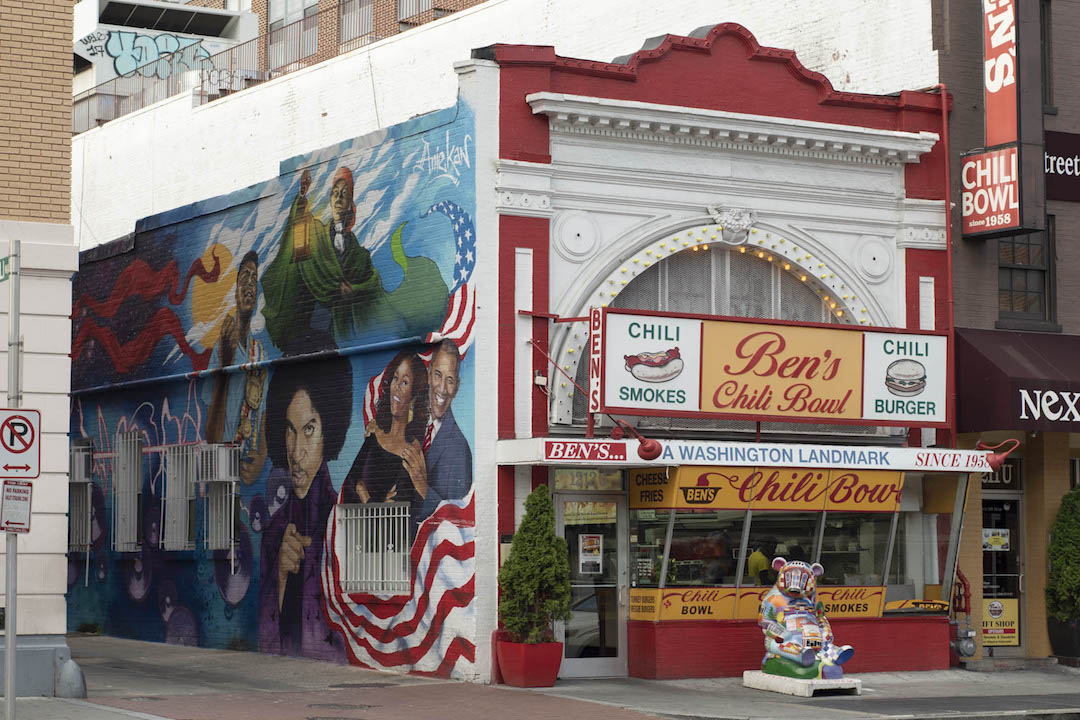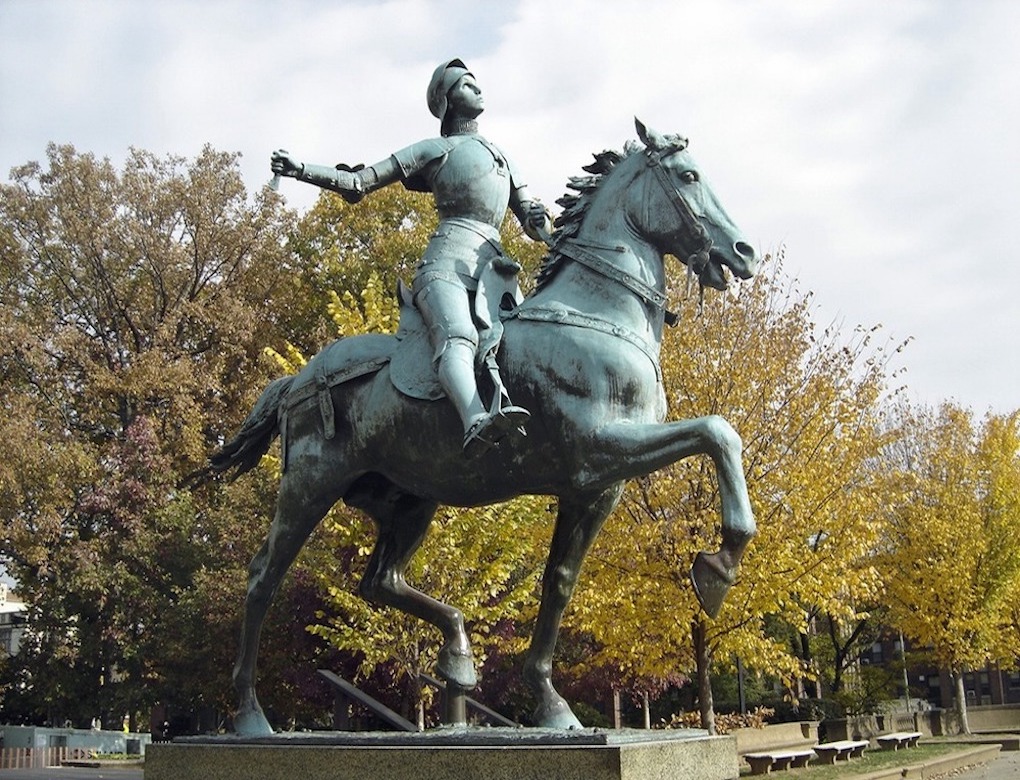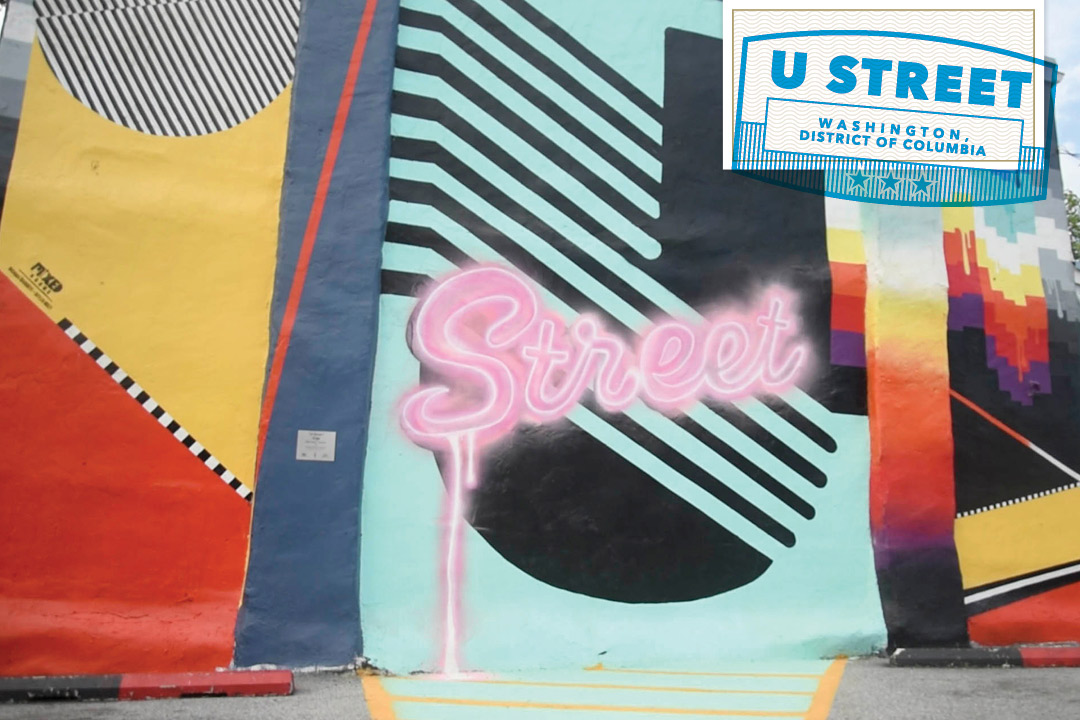Washington, D.C., is more than the seat of the national government. The DMV—the District of Columbia, Maryland and Virginia—is home to broad, diverse communities and neighborhoods that offer history, good eats, parks and waterfronts—much of it a quick Metro ride away. Once a month during the academic year, Getting to Know the DMV will offer a glimpse of selected neighborhoods.
By Tatyana Hopkins
Dating back to the 1870s, the U Street Corridor was the center of African American culture, business, civic and religious life in a then-segregated Washington, D.C.
It had the largest urban African American community in the nation until Harlem surpassed it in 1920, according to Cultural Tourism D.C.
Many African Americans began settling in the area during the Civil War to capitalize on new streetcar lines, cheap land and integrated housing. By the 1920s, the corridor had hundreds of black-owned businesses, banks, churches and art spaces, earning the nickname “Black Broadway” for its numerous theaters and music venues.
Businesses along U Street suffered from damage and subsequent disinvestment following the 1968 riots after the assassination of Martin Luther King Jr. Today, the rapidly transitioning neighborhood has regained its status as a hub for culture and art. The corridor’s prime area, which spans U Street NW from 9th Street to 16th Street, includes dozens of restaurants and entertainment attractions.
Its lively music and nightlife scene continues to make it one of the most vibrant areas in the city attracting visitors, new residential buildings, restaurants, retail shops and entertainment spots. In 2011, the American Planning Association designated the corridor a “great street among great places in America” for its economic and artistic revival.

The African American Civil War Memorial honors the more than 200,000 black soldiers and sailors who served in the U.S. Army and Navy during the Civil War. (Sydney Gray/GW Today)
What to do:
Follow Cultural Tourism D.C.’s Walking Trails
Follow the Cultural Tourism D.C.’s self-guided “City within a City” trail that reveals U Street’s many stories. Locate the trail’s 14 illustrated signs that highlight important historical sites in the neighborhood on the tour or pick up a map or tour guide from the Greater U Street Neighborhood Visitor Center.
On the African American Heritage Trail, discover how African Americans in the area helped shaped the U Street Corridor by visiting these points of interest:
- The African American Civil War Memorial and Museum, 1925 Vermont Ave., NW. This national memorial commemorates the 209,145 soldiers of the U.S. Colored Troops, whose names can be found on the memorial’s Wall of Honor. The museum and research center, which rests adjacent to the memorial, hosts exhibits, re-enactments and programs.
- Duke Ellington’s Residences, 1805 and 1816 13th St., NW. Internationally renowned jazz icon Edward Kennedy “Duke” Ellington spent his teenage years at two homes in the U Street Corridor. During his 50-year music career, he often returned to D.C. to perform, and he frequently stayed at another site on the trail, the Whitelaw Hotel.
Catch a Live Music Performance
There is no better place for a music lover in the DMV than U Street. You will find all variety of affordable music options from jazz clubs, DJs playing music of all kinds and bands with national acclaim playing at venues in the area. Check out an array of live music performances at the 9:30 Club, ranked among the nation’s top “Venues That Rock” by Rolling Stone experts and readers, or see local and national independent artists perform live at the Black Cat. (Both venues have a general all-ages policy, unless otherwise noted.) You can also join D.C.’s music scene with live and DJ performances at the U Street Music Hall (where the age policy varies from all ages to 21 and over).
Discover Local Art
Head to the Transformer, an art gallery supported in part by the Andy Warhol Foundation for the Visual Arts, and view the work of emerging artists. The Hemphill Fine Arts Gallery, which tucked away in a high-rise, features diverse contemporary art from emerging to established artists. Also, see the work of up-and-coming artists part of a robust fellowship program at the Hamiltonian Gallery. Or head outside of the galleries and discover the area’s array of street murals. Find tributes to historical figures and other art that reflects the corridor’s cultural history.
Shop Secondhand
A number of D.C.’s secondhand stores are concentrated around U Street. Check out Buffalo Exchange’s rows of shoes and well-curated men’s section for trendy pieces at a bargain price. For an eclectic mix of home goods and furniture, visit Miss Pixie’s Furnishings and Whatnot for old photos, farmhouse benches and brightly colored sofas.
Relax in Malcolm X Park
Known officially as Meridian Hill Park but dubbed as Malcolm X Park by locals, the Italian-style garden was the site of many civil rights protests in the 1960s. During the summer, drumming circles are hosted in the park. It is also home to a Joan of Arc statue, the sole equestrian statue of a woman in the nation’s capital. And the park’s 13 basin cascading fountain is the longest in North America, according to the National Park Service.

For decades, celebrities, locals and tourists alike have lined up for the famous half-smoke at Ben’s Chili Bowl. Autographed photos of the restaurant’s famous diners line the walls. (Sydney Gray/GW Today)
Where to eat:
The U Street Corridor offers eclectic dining options. You can find soul food, Italian cuisine, half-smoke sausages and even an area on the eastern end known as “Little Ethiopia” for authentic Ethiopian cuisine. Or head to the original Busboys and Poets. When in the area, try:
- Ben’s Chili Bowl, 1213 U St., NW
The iconic restaurant is one of U Street’s oldest businesses. Head to this landmark for a D.C. original: the half-smoke. Eat the famous chili-covered dogs and half-smokes that locals and visitors alike have been lining up for since 1958.
- Dukem Ethiopian Restaurant, 1114 U St., NW
For the past decade, Dukem has served authentic Ethiopian cuisine and occasional live music.
- Ted’s Bulletin, 1818 14th St., NW
Be prepared for long waits here for weekend brunch. This spot for American favorites also serves up nostalgia with black-and white television sets other vintage memorabilia.

Meridian Hill Park, unofficially known as Malcolm X Park to some residents, features the city’s only statue depicting a female on horseback (Photo Courtesy of National Park Service)
How to Get There:
From Foggy Bottom
- Metro: From the Foggy Bottom Metro Station, take the Orange Line toward New Carrolton or Blue and Silver Lines toward Largo Town Center to L’Enfant Plaza Metro Station. Then transfer to the Green or Yellow Lines toward Greenbelt or Fort Totten to get to the U Street Metro Station.
From Mount Vernon
- Metro: Hop on the D6 Metrobus from the corner of MacArthur Boulevard and Reservoir Road NW toward Farragut Square. From the Farragut West Metro Station, take the Orange Line toward New Carrolton or Blue and Silver Lines toward Largo Town Center to L’Enfant Plaza Metro Station. There, transfer to the Green or Yellow Lines toward Greenbelt or Fort Totten respectively to get to the U Street Metro Station.


